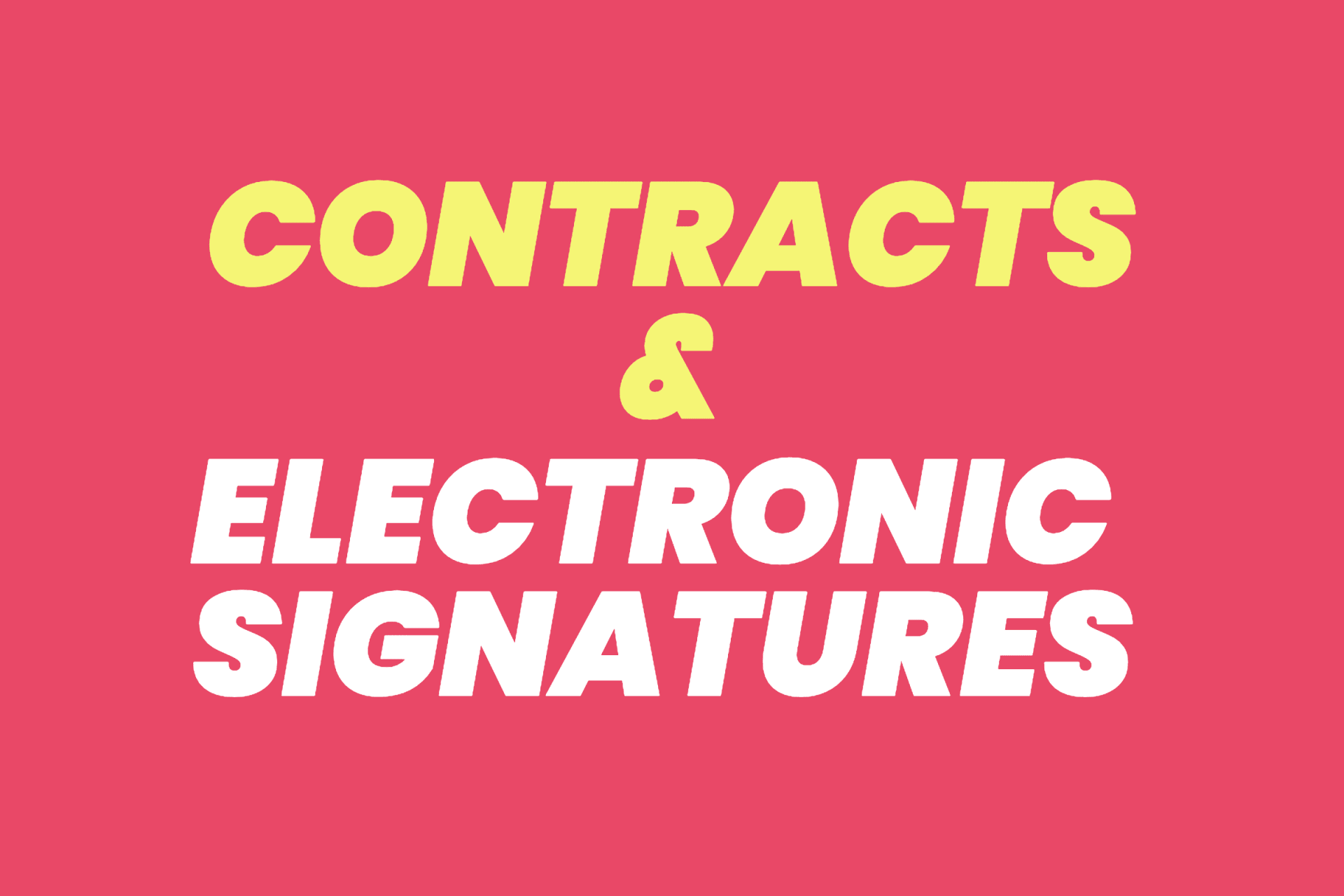Contract Law 101: Are Scanned Signatures Valid
Susie Morrow
Before we start getting into the nubbins of this article, I want you to bear something in mind. If you have spent ages working hard, building your reputation, and you’re currently working with clients and building a successful business, would you put it at risk because you couldn’t find the time to do one little thing correctly – that is to make sure your online econtracts and documents have valid signatures from all parties.
With this in mind, let’s look at the contract law around a scanned signature.
So, you’ve got a great client and now you’re finalizing a contract to make sure everything between you is agreed and acknowledged. The contract contains details and promises such as what you will deliver and when, it also states what price the client will pay on delivery. Then you both come to sign the contract. Trouble is you live in different continents. Postage, even expedited, will take at least 2 days and it could get lost. So you both decide to use an econtract. You sign on the dotted line, scan the contract, and email it across for final sign off from your client. At least now you’ve signed your econtract, admittedly with scanned signatures, but you can start work and meet that tight deadline.
Trouble is, you keep your end of the bargain, but the client pays you only 50% of the agreed price. This is where you find out if a scanned signature will hold water in a court.
What can go wrong with scanned signatures on an econtract?
The thing about signatures is that they are simply an attestation that a person agrees to something. It is the ‘something’ or in other words the promises within a contract, that normally cause issue – like non-payment, or a disagreement in the expectations of the contract. If you simply placed a scanned signature on the document, that document could be sneakily changed, and it would be difficult to prove it didn’t originally contain those inserted clauses or changed terms. It is all too easy to electronically manipulate an econtract.
This actually happened to a colleague who was a CTO of a software development company. The CTO signed a contract that had various clauses, none of which mentioned intellectual property of existing products.
The worst thing happened and a dispute over various ownership rights arose. The original contract had scanned signatures on it at the insistence of the originating company. When his day in court came round, the other company had inserted additional pages into the contract without his agreement. However, he had to prove that they had inserted them, and they had not been part of the original – for all intents and purposes they looked like they were. The dispute was long and costly, involving forensic analysis of the contract – it ended well for my colleague but came at a cost.
If the above scenario had involved e signatures, like those offered by ApproveMe, then it would never have a happened. E signatures have a built-in feature that ties the document content to the digital signature. If anyone changes any part of the contract, all signatures will show as invalid and, at least in the case of the ApproveMe platform, an audit trail is generated pointing the finger at the person making that change.
But are scanned signatures themselves actually valid?
Having a scanned signature(s) on a document is valid. This has to be the case in a world where we are more likely to work with someone geographically far, than local. It is just convenient to be able to use an electronic version of a document instead of hard copies in the post.
Interestingly, it is an ancient act, the Statute of Frauds which was originally enacted in 17th century England, and that is still operational in 48 states that allows you to use scanned signatures. The Statute of Frauds covers a number of contract types including the sale of goods over $500. Even though it was developed nearly 400 years ago, the elements of the law can still be used to determine the validity of a modern day signature.
Massachusetts, in a variant of the law, even allows emails to be used to act as a signature on a contract. An example being the case of Feldberg vs. Coxall. In this case, the purchase was a piece of real estate, the agreement falling through, but the buyers being able to uphold the agreement by using the Massachusetts Uniform Electronic Transactions Act which allowed an email exchange to act like a signature in a contract.
To reiterate, having a scanned signature on a contract is perfectly acceptable under law. But acceptance isn’t the issue.
The hard part is avoiding fraud. E signatures, that are compliant with electronic signature laws, like ESIGN, have in-built anti-fraud technologies to ensure that the electronic version of signatures cannot be taken advantage of. There is little point in knowing that your scanned signature is accepted, if the contract it is part of has fundamentally changed, and you can’t prove that is has. In our opening example, the vendor would have to prove that the client had changed the price to 50% of the original. This is a costly thing to do. Online signatures, that are secure, have anti-fraud technology components, and that creates full auditable trails, are the only true way to created trusted contracts.








